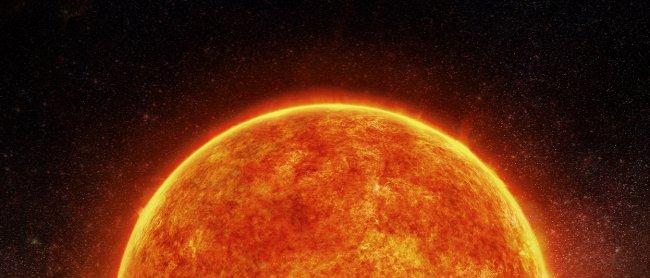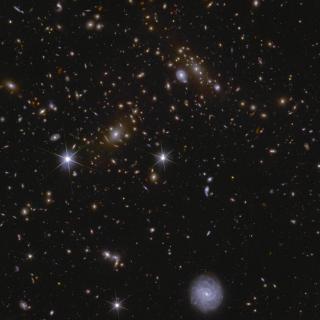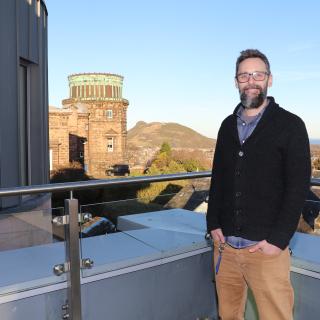One of the most successful techniques presently in use for detecting expolantes is the search for transits. Similar to the way the Moon cuts off the light of the Sun during an eclipse, a transit is produced when a planet orbiting a distant star cuts off a small fraction of its light when it passes between us and the star. There are many projects dedicated to detecting and monitoring small variations in the light from many stars in the hope of discovering an extrasolar planet.
One of these projects is MEarth, which uses a network of 40 cm telescopes to measure the light from hundreds of stars. In Setember 2014 MEarth detected a possible transit in the star named LHS 1140. Thanks to a thorough piece of research using data from MEarth-South, at the Interamerican Observatory of Cerro Tololo, Chile, and with the HARPS spectrograph on the 3.6m telescope at the La Silla Observatory of the European Southern Observatory, ESO (also in Chile) a planet was confirmed orbiting around this star with a period of 25 days. This spectrograph was designed especially for the detection and study of extrasolar planets. An almost identical twin instrument is installed at the Telescopio Nazionale Galileo (TNG) at the Roque de los Muchachos Obseratory, in Garafía (La Palma).
The planet in question, given the name LHS 1140b is in orbit around an M-type star. This type of stars, with sizes and luminosities less than those of the Sun,are the most abundant stars in the Galaxy. This planetary system is at only 40 light years from Earth, in other words in the solar neighbourhood. An international team, of which the IAC researcher Felipe Murgas is a member, was able to establish the size and mass of the planet as 1.4 times the radius of the Earth, and 6.6 times the mass of the Earth, respectively. Because of its size, and high mass, it is very probable that the planet has a rocky composition.
"This is the most exciting exoplanet which I have seen in the last ten years" comments Jason Dittmann of the Harvard-Smithsonian Centre for Astrophysics (CfA), the first author of the article in Nature. "It would be difficult to find a better objective for carrying out one of the most important searches in science: for evidence of life beyond the Earth".
Another important aspect of the discovery is that LMS 1140b is orbiting its star in the so-called "zone of habitability", the region around a star in which the temperature makes it possible for water to exist in all of its three phases: solid liquid, and gas. This is, as we know, one of the requirements for the existence of life as we know it on Earth.
"Because it is at a distance from its star which permits relatively cool temperatures, and a mass which is big enough to prevent the evaporation of an atmosphere due to the wind of its star, LHS 1140b has become one of the most promising candidates for the detection and study of its atmosphere, using the next generation of telescopes, such as the James Webb Space Telescope, (JWST)and the European Extrmely Large Telescope (E-ELT)" concludes Felipe Murgas
Scientific article: “A temperate rocky super-Earth transiting a nearby cool star”. Nature, 20 abril 2017. doi:10.1038/nature22055
Contacts:
- Jason A. Dittmann (Harvard Smithsonian Center for Astrophysics): jdittmann [at] cfa.harvard.edu (jdittmann[at]cfa[dot]harvard[dot]edu)
- Felipe Murgas (IAC): fmurgas [at] iac.es (fmurgas[at]iac[dot]es)



